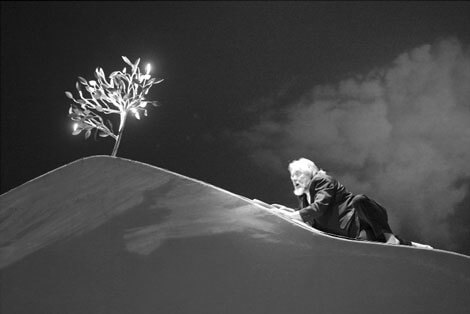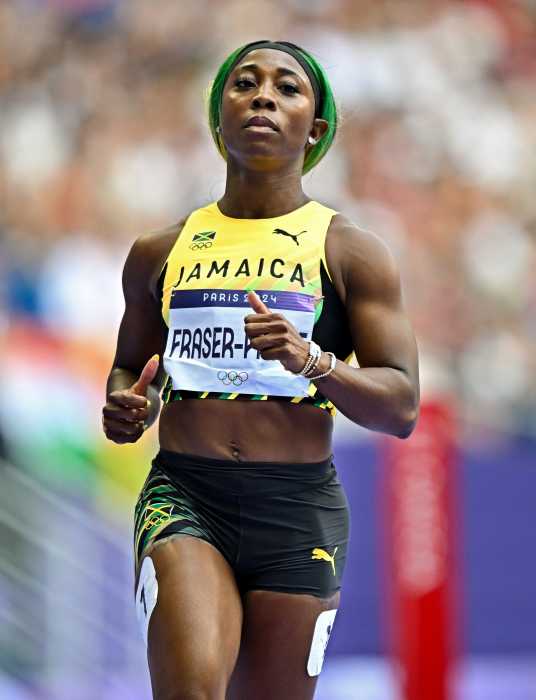Short runs and new ventures enliven New York opera scene
One has to admire James Levine for insisting on programming, year after year, masterpieces of the 20th century that the Met should be doing––and which its orchestra plays magnificently––but don’t exactly spell land office business at the box office. As these runs tend to be short, with no cast changes, and the performances aren’t expected to find favor with the tourist crowd or with the more conservative subscribers and donors, directors are often free to produce genuine theater as opposed to “museum stagings”
Hence the two Berg operas (“Wozzeck” and “Lulu”) and Stravinsky’s “Rake’s Progress” are reliably some of the company’s best shows. Another winner returned this year as truly odd holiday fare: Schoenberg’s crusty two-act torso “Moses und Aron,” left incomplete at his death.
Seeing Peter McClintock’s restaging of Graham Vick’s excellent production (December 20), now in its second revival, made one regret anew the utter hash Vick made when turned loose upon a warhorse from the standard repertory (“Il trovatore”). Paul Brown’s colorful, elemental sets, strikingly lit by Matthew Richardson, recall another visually successful Met Biblical staging, “Samson et Dalila.” Brown costumes the cast largely in dark clothes that evoke echoes both of the Holocaust––the underlying background in many ways for Schoenberg’s work––and more contemporary horrors: what might be called the New York magazine scale of values.
Ellen Rabiner’s well-voiced Sick Woman is the victim of plastic surgeons; veteran William Stone, styled as Donald Trump, is a flashy tribal leader. And one pities any society matron (or pompous queen) who wore mink to these performances, in which bloody fur pieces play a prominent role in illustrating the degradation into which the Golden Calf leads the Israelites.
I first heard John Tomlinson in my teenage years and, despite lavish claims made for him by his fellow Britons, his has never struck me as more than a fine second tier bass-baritone at the service of an impressive-looking stage artist. In spite of audible wear and tear and woof in the tone, he still sings major roles in Europe; I thought him perfectly cast here in the Spechstimme duties of Moses. Philip Langridge’s tenor is marginally drier than before but remains an expressive and musical instrument, and they make a fine team. You are not likely to hear this score better played by any opera house orchestra in the world.
Lehár’s “Merry Widow” has Holocaust echoes of its own (Louis Treumann, the handsome creator of Danilo in 1905, was killed at Terezin in 1944) but this tunefully fluffy Viennese torte is of course more standard holiday programming. Operetta is not really either my cup of sweetened tea or the Met’s forte, but I enjoyed hearing the piece once played at this scale (December 29). I wish the company would rethink using Martin Crimp’s unidiomatic English translation and re-stage the remarkably awkward entrance of the title heroine: we first see her coming forward on a shaky stair platform, obviating applause––like something out of a cheap Broadway tour.
Two weeks ago, James Jorden reviewed the “standard” cast, and I echo his praise for the firecracker Emily Pulley and reservations about the vocal and dramatic discipline of the ideally hunky Danilo, Bo Skovhus. Always interested in the Met’s “cover” performers (those who perform when the main singers scheduled for a production have a night off, planned, or otherwise), I elected to see the one “Widow” alloted to Sally Burgess: a ranking star of the English National Opera who performed well as Isabella when the Met revived Philip Glass’ “The Voyage” in 1996, but not exactly a box office attraction here. Taking over in the lead of a star vehicle like this one must be a terribly difficult assignment. A thoroughly schooled artist, Burgess did a commendable professional job in a voice somewhat underscaled for the house and, while pleasant enough, not exactly possessed of the creamy sound and silken pianissimi that Hanna’s music rewards. It’s odd that this soprano role remains the province of mezzos just because the production was sculpted around Frederica von Stade. Maybe Karita Mattila could truly galvanize this pleasant but unmemorable show.
I was happy to make the acquaintance of the New York Chamber Opera, a newish group under the capable baton of Met assistant conductor Lucy Arner. There is always room in New York for smart productions of smaller scaled operatic works than the Lincoln Center barns are able to pull off. Once such is Donizetti’s skillful 1836 comic one-act “Il Campanello di Notte” (“The Night Bell”), which director Ned Canty brought off successfully at Symphony Space (December 19) in a well-imagined polyester-era update––costumer Dan Urlie must have raided every thrift store in the outer boroughs to find these clothes. “Il Campanello” is a Neapolitan genre comedy of stalled intentions: the lustful Enrico stalls the consummation of the marriage of his cousin (and erstwhile girlfriend) Serafina to the older apothecary Annibale Pistacchio by repeatedly ringing, in different disguises, the night bell local law compelled apothecaries to answer in person.
This set-up gave ample opportunities to the comedic talents and italianate stylistic bravura of the show’s two leads, baritone Marco Nistico (Enrico) and bass Stefano de Peppo (Annibale): both talents to watch. Sarah Miller made a sympathetic Serafina but toward the end of this fourth of four shows tired a bit vocally. Mariana Karpatova gave a gemütlich performance as Serafina’s mother Madame Rosa, and she commands a capable, sonorous mezzo. (She’ll be Alisa to the Lucia of Sumi Jo at Newark’s New Jersey State Opera February 20 and 22.) Arner led a spirited reading with a musically creditable ensemble of nineteen. Purcell’s “Dido and Aeneas” is promised next; keep tabs on New York Chamber Opera’s developing plans.
David Shengold (shengold@yahoo.com) writes about the arts for Opera, Opera News, Playbill, Time Out New York and other venues.

































